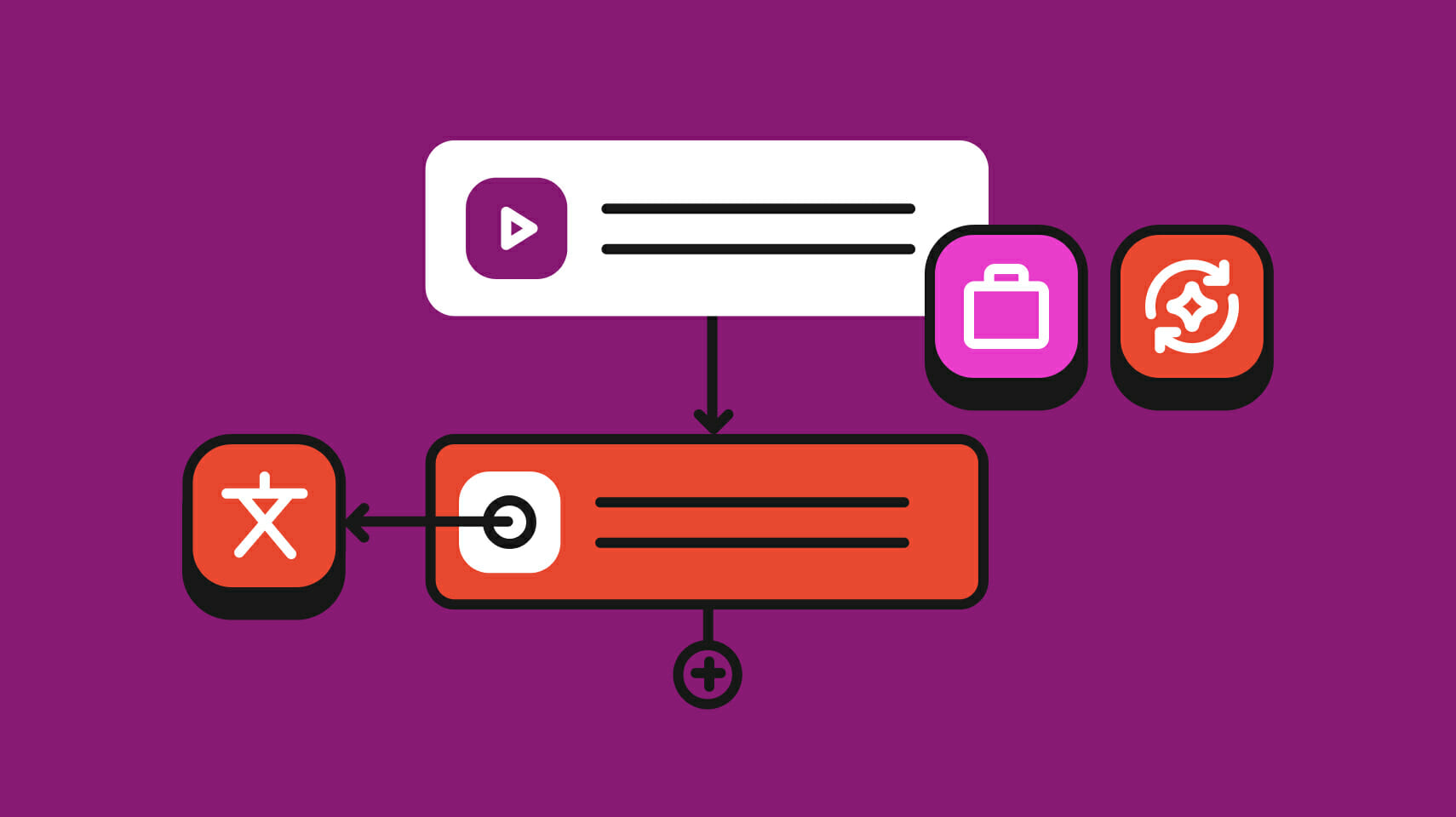Translation management
Transcreation: The Art of Marketing Across Cultures

With conventional translation, the same message can resonate very differently from one language culture to the next. When this message is marketing or something technically critical, those differences can be a serious problem. Linguists address this via localization by a native-speaking translator with an additional review step to double-check accuracy.
However, there is a more flexible process that gives translators creative leeway to adapt that message to their culture—transcreation. This article will look at the evolution of transcreation, how and why it works, and the processes and tools required to manage this modern level of business communication across geographies.
What Is Transcreation?
Transcreation takes literal translation to the next level by adapting content in tone and style to more closely resonate with the culture of the target market. Transcreation gives the translator a hand in the creative process, allowing them to adapt the content to reflect the different requirements of a language and culture. This can range from rewriting colloquial phrases that lose their meaning in a different culture to a full rewrite of the copy to try and convey its meaning and function to a very different audience.
The History of Transcreation
Transcreation, as a concept, started in the second half of the 20th century in India and other countries, often driven by translation issues in imported entertainment like films and books. The term didn’t come into more common use by the language service provider (LSP) business, the main source of business translation, until the early 1990s when it became a part of marketing, sales, and advertising language.
Marketing and advertising companies saw the process as a new service product they could offer to an increasingly global marketplace. When taking on a client in one language market, they could offer their transcreation services as a means of expanding that client’s offering. In effect, they were expanding their creative products and services.
Today, transcreation is still confused with localization and definitions differ, though most focus on the degree of creativity applied. It is an evolving discipline as it is combined with machine translation, artificial intelligence, gaming and software, and other emerging content forms and processes.
Transcreation in Global Marketing: Why Is It Important?
Years ago, global marketing often depended on the idea that English was a ‘global language of business’. This assumed that savvy customers in other countries and cultures must know English to do business globally. And to some degree this was true. However, the world has changed significantly, driven by widespread global communication via the internet and the rise of new major economies like that of China, Saudi Arabia, Brazil, and other regions not characterized by one language of business.
Today, it is understood that a failure to create content for the native languages and cultures of target markets will mean the failure of those marketing efforts. This can mean that once sacrosanct things like brand standards may require significant changes when they cross borders. A basic examination of a website like that of Starbucks, for example, their US website vs. their Japanese website, shows a completely different experience encompassing graphic design, color palette, and copywriting. It is an extreme but not uncommon example of transcreation.
Transcreation, Translation, and Localization: What Is the Difference?
Understandably, there may be some confusion around the differences between translation, localization, and transcreation.
Translation is the process of converting the literal text content of a document from one language to another while being as true to the original meaning as possible. For critical technical content like complex user manuals or safety warnings, this literal approach may be a requirement for the proper use of a product or service.
Localization is the next step after translation. Localization takes the translated content and revises it to align with the culture of the target language. The localization professional is typically a native-speaking, experienced translator who is also a subject matter expert in the subject of the content. An example might be a translator who is also a User Interface (UI) expert and must deal with common occurrences like button text that changes length materially when translated. The localization in that example would involve finding new button text that can be accommodated without losing its meaning.
Transcreation is in some ways more like the process of literary translation where the translator becomes a creative partner with the original writer, working together with them to tell a story in both languages. In business translation, transcreation may mean rewriting the entire content in the new language or actually developing new creative, like ad copy, that is specifically designed to be effective in that culture. In the Starbucks website example cited earlier, a corporate decision was made to develop a completely different message for the Japanese culture, a major transcreation undertaking.
Top 5 Ways in Which Transcreation Differs From Translation
There are five significant ways transcreation differs from the more traditional translation process.
Literal vs. Native
Linguists and marketers, a seemingly odd couple, have determined several differences between translation and transcreation. The first is that while translation tries to preserve the exact meaning of a text, transcreation adapts that meaning to more clearly present the intent in a different cultural context, if not the literal word-for-word text
Different Skill Sets
Transcreation involves two skill sets not always required of translators: copywriting and copy editing. Copywriters fall on the spectrum of creators in marketing, crafting messaging to help sell a product. Copy editors may adapt translated copy to be clearer and more relevant to a specific global market. The transcreator has a different set of skills than a pure literal translator.
The Type of Content Can Determine Which Approach Is Used
Transcreation and translation are required in different end-uses of content. A legal document, safety warning, or instruction manual may require the literal accuracy of a classic business translator. Translated marketing and advertising content translated literally, without regard for cultural issues, can be disastrous at worst and laughable at best. Transcreation solves this issue by rewriting the marketing copy with native knowledge of how marketing is most effective in the transcreator’s culture.
Major Cultural Adaptation Requires Transcreation
Certain types of translated content, specifically gaming and film, are often expected to be radically changed when developed for a new culture. An American comic book hero, with their casual chatter, humor, and locales may not translate well to another culture like India. A transcreation of that comic book might move it to an Indian city, give the characters jokes and fears common to Indian society, etc., all with the goal of translating that popular content while retaining its appeal.
Transcreation Can Be a Reputation and Respect Decision
Finally, in a global business and political climate, there is the expectation that companies and organizations move towards transcreation as a sign of respect for the varied cultures they interact with. Translation that is too literal to the original can signal a lack of sensitivity to the target culture.
Are Transcreation Professionals Copywriters?
In a word, yes, in most cases. Nevertheless, as mentioned earlier, they may be copy editors specialized in making copy sound more local. Copywriting is creative communication designed to convince and compel in a business context. In other words, the transcreation process combines translation with copywriting, potentially by more than one creator. A copywriter might be given translated copy and then rewrite it for their culture. It is a creative partnership.
The Transcreation Process Step by Step
There is no formal instruction manual for transcreation, so a strict process has not been codified in a regulatory or standards guide. One logical process might run like this:
- Content is created in the source language,
- Content is parsed to determine what requires transcreation and what should adhere to the original as much as possible,
- Content is translated into the target language, and a creative brief prepared for the content requiring transcreation,
- Following the creative brief, a native copywriter or creative team in the target language adapt the message to their market.
Central to this process is the brief provided to the transcreation team. In it, they are given instructions on where transcreation is appropriate or not, particularly regarding branding issues. It may also contain detailed instructions for the creative approach, based on market research, including surveying, focus groups, and demographics.
It is important to note that this process can vary widely depending on the nature of the content and its intended purpose. For example, a transcreation project for a video game might completely rethink the setting, the characters, the rules, etc. This would involve an entire creative team mirroring the abilities of the original creators, but in a different setting.
Using translation technology for transcreation
The process outlined above greatly simplifies the transcreation process. In reality, bringing a product or service into a new language market is an extremely complex undertaking in an information-driven economy. A single product introduction can involve many moving parts, including:
- Branding
- Website and other marketing materials
- Technical writing like manuals, specifications, and regulatory compliance documentation
- Legal and financial content
- Video and audio production
With a single product carrying this kind of content load, manual management using things like spreadsheets and emails can easily get out of control, especially when multiple languages and requirements are involved.
To cope with that, cloud-based translation technology, for example, in the form of a translation management system (TMS) has emerged. These platforms are typically accessed via a centralized online source easily shared by teams operating across borders and cultures.
A TMS, often specialized for various markets and types of content, helps a localization or transcreation project manager keep all their content projects and teams synchronized across multiple projects and languages. They help eliminate errors and omissions, and provide version control, avoiding costly duplication of effort.
TMS typically provide certain core functionality designed to save time and money while eliminating duplication of efforts and communication errors. These include:
- A centralized communication structure connecting PMs, translation professionals, and other stakeholders in one ‘single source of the truth’ location to eliminate emails and provide tracking for conversations and instructions.
- Translation memory (TM) that scans the content and identifies any parts that may have previously been translated. These are flagged based on their word-for-word accuracy so they may be removed from the text sent for translation, saving time and money. This memory is maintained across a project’s lifetime, becoming a valued resource.
- Business support functions, including project quotes, invoicing, vendor tracking, and other business processes associated with the translation process.
How Phrase can help with transcreation in global marketing
The most comprehensive localization solution on the market, the Phrase Localization Suite is designed for adapting digital content of all kinds, from software user interface (UI), user experience (UX), marketing, knowledge bases, and other customer support materials, and more. It links the source content creation team with the translation, localization, and transcreation teams for each target language, in real-time, with easy progress tracking and bug detection.
This tight integration simplifies the ability to manage a transcreation process from end to end. All stakeholders and creators can see their required actions, report any issues, and complete their tasks within the system. Costs and time factors can be estimated, tracked, and completed from initial billing and deadlines to final invoicing and delivery.
Phrase’s extensive experience in helping customers manage translations of complex software and digital projects has helped them refine processes required by potentially very complex projects like the full transcreation of a brand, product, or service. For a deep dive on how Phrase can help you with transcreation in global marketing, we recommend our comprehensive guide to marketing localization.
Last updated on June 20, 2023.




